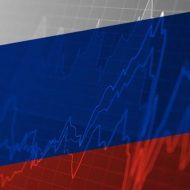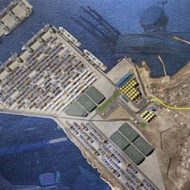The Schiller Institute has organized in Paris an international conference titled “Water for Peace”. Various speakers from different countries participated on the conference held in January 9, 2024.
As United World International, we consider the conference of strategic value and will publish in two parts the notes of Odile Mojon, one of the organizers.
Below is the first part.
In a packed room, twelve speakers, including seven experts from think tanks and public and private associations, addressed a passionate audience on January 9, including representatives from embassies in Central Asia, Africa and South America. All spoke of how water, all too often used as a tool in many conflicts, is par excellence one of the main vectors of a policy of peace and mutual development.
Indeed, the particularly grave situation facing the world today – starting with the Ukraine and the Middle East – where the risk of a drift towards world war cannot be ruled out, makes peace the subject that must be at the center of all concerns.
The Schiller Institute’s conference took this perspective by reminding us that, for anyone serious about peace, water is a major lever. However, water will only be an instrument of peace if we cease to regard it as a scarce resource to be allocated according to necessarily arbitrary criteria.
This was the aim: to provide a positive vision of a subject that presents itself as a concentration of vital issues. Above all, to reassure people: no, there is no need to adapt to a supposed scarcity; yes, it is urgent to do everything possible to build adequate infrastructures wherever they are lacking. Let’s repeat: access to water – like access to energy or access to food – is an eminently strategic issue; its technical dimension, however important, is ultimately only secondary.
However, it was essential to place this issue in the very concrete context of the current tragic situation in the Middle East, in the knowledge that even if the causes of the horror unfolding before our eyes cannot be reduced to the problem of water alone, it undeniably plays a decisive role.
South-West Asia is one of the regions of the world that illustrates how natural conditions can pose considerable challenges, but it is also an example of how inability to act, or lack of will, can lead to disaster. This was demonstrated by the first presentation of the first session, on the Middle East, highlighting the crucial role given to water by Lyndon LaRouche in any genuine peace process, when he presented his “Oasis Plan for South-West Asia” back in 1975. The aim was to avert the danger of war, which a lack of water could only fuel in an East already plagued by bloody conflicts.
Indeed, isn’t it a certain paradox that this region of the world known as the “Fertile Crescent” is today emblematic of systemic drought? Of course, geography and climatic changes have played a decisive role. However, it was worth asking how ancient societies, with only rudimentary technical means at their disposal, managed to transform desert areas into fruit and vegetable-producing gardens; how our ancestors knew how to put water at the service of all; how ancient civilizations managed to develop particularly efficient water conveyance systems?
Water is also an issue in terms of transportation and storage. Canals have shaped the physical and economic geography of our countries since time immemorial. More recently, dams have completed the range of hydraulic infrastructures without which no civilization can flourish. Here again, the question of political will is absolutely crucial, as illustrated by the case of the Three Gorges Dam in China, an ambitious project that was difficult to implement and met with strong resistance and criticism, but which is now proving so important that the authorities are planning to widen the sluices of the gigantic staircase of locks that allow ships to transit.
Dams, like canals, are among the infrastructures targeted by radical environmentalists; quite wrongly so. But it’s important to recognize that certain infrastructures, when built without conceiving them in a living relation with their environment, can create problems – which then has to be corrected – as in the case of the new Rhine route designed by German engineer Johan Gottfried Tulla.
In fact, the modern technologies we now have at our disposal enable us not only to work miracles, but also to have a positive impact on the environment. The case of Xinjiang, a region particularly affected by water shortages and which today produces water-hungry fruit and vegetables, is a striking example. The immense potential represented by genuine land reclamation through the intelligent use of water is a source of optimism that consigns eco-anxiety to the shelf of infantile fears.
Odile Mojon: the Oasis Plan, key to future Israeli-Palestinian peace
Odile Mojon, editor-in-chief of the Schiller Institute’s website, addressed the central theme of the seminar, and then opened the session on the theme of “Water, the key to peace”.
Today, a third of the world’s population suffers from a drastic reduction in water resources, and according to international security institutions, far more than oil, “water has become the primary source of conflict in the world”.
With the Israeli-Palestinian conflict, the Near and Middle East are at the heart of these risks. Ms Mojon recalled that, in 1992, Yitzhak Rabin declared: “If we solve all our problems in the Middle East, but not the sharing of water, our region will explode”. In 1975, following talks with the leaders of the Iraqi Baath Party and the Israeli Labor Party, the American economist Lyndon LaRouche (1922-2019) came to precisely the same conclusion when he proposed his “Oasis Plan for Peace and Development in the Middle East”. But this plan, like other proposals along similar lines, was blocked on the Israeli side, and we know only too well what happened to Yitzak Rabin, who was assassinated after signing the Oslo Accords, ousting Shimon Peres and demonizing Yasser Arafat.
Mr. LaRouche’s Oasis plan included three major axes:
1) Israel’s relinquishment of exclusive control over water resources;
2) economic development of the Gaza Strip;
3) construction of the Gulf of Aqaba-Dead Sea and Dead Sea-Mediterranean canals, going beyond the Peres plan which combined canals and tunnels to bring water through the mountain ranges between the Red Sea and the Dead Sea.
Lyndon LaRouche proposed the use of nuclear energy to generate the electricity needed for economic development and desalinate seawater to obtain drinking water in the quantities needed.
For him, this was not a proposal from “experts” dropping from on high, but an illustration of what could be done with existing technologies, if peace through mutual development was indeed the goal. He believed that political negotiations could only succeed on the basis of such a dynamic, opposed in principle to geopolitical considerations and prevailing religious prejudices.
Today, more than ever, this vision is indispensable for reorienting the currently dominant financial and monetary system, incapable of ensuring mutual development, towards a physical economy producing the resources of peace, notably through the creation and management of water resources.
The current development of China and India shows that anything that goes in this direction and is put into practice becomes a success factor. Of course, the Oasis Plan alone cannot bring peace to the Middle East, but such a perspective is essential to its foundation and inspiration.
Utopian? No, because if we don’t change our policies to give every human being the means to exercise his or her creative abilities, we are condemning humanity to war through the headlong rush to oligarchic financial disorder and permanent rearmament.
The UN Water Conference in March 2023 in New York acknowledged the growing tensions in the water sector and called for greater cooperation between states. Management of water circulation (rivers, canals, etc.), management of water tables and aquifers, irrigation techniques, desalination, wastewater treatment, exploitation of glacial resources (icebergs, etc.), cloud seeding: all of this is water, on a global scale. In many ways, that’s what we’re going to talk about here.
“Water management, as I have shown, using the decisive case of the Middle East to launch the debate, is a political, economic and social issue, and ultimately a vital one, which must be managed for the public good and in the general interest, recognizing the right of every country in the world to technological progress and development. The collective South is calling for this, and it’s up to our European countries to respond and rediscover their raison d’être.”
Karel Vereycken: the ancient “Science” of Oases
Geo-economic expert Karel Vereycken presented the “Science of Oases”, with examples from the Indus Valley and Persian Qanats.
Archaeological sites testifying to agricultural activity can be found in the Indus Valley and in the “Fertile Crescent” stretching from Egypt via Mesopotamia to Sumer. The earliest irrigation techniques involved capturing rainwater and transporting it to the land to be irrigated.
The case of Mehrgarh (Pakistani Baluchistan) is particularly interesting. Traces have been found here dating back to 7000 BC, attesting to an already highly advanced form of agriculture, with reservoirs and rudimentary drainage canals demonstrating an understanding of the principles involved. Later, still in the Indus Valley, this knowledge led to the construction of great cities such as Harappa and, above all, Mohenjo Daro, a city of 40,000 inhabitants with a public bath at its center, rather than a royal palace or a religious temple. No fewer than 700 brick wells, houses equipped with bathrooms and individual and collective latrines have been discovered here.
Many of the city’s buildings have two or more floors. Water came down from cisterns installed on the roofs and was channeled through closed clay pipes that emptied into covered sewers under the street. To lift the water from where it could flow by gravity, man invented machines such as the chadouf, the “Persian wheel” and then the “Archimedean screw”.
In or even before the Achaemenid era (500 BC), Persia introduced underground qanats or “drainage tunnels” to prevent rainwater from disappearing into the sands and carry it to areas where people decided to irrigate and live. Oases, symbols par excellence of desert zones, are not a natural phenomenon at all. Behind each one, a man-made qanat ensures what seems to us to be magic. In North Africa and other arid regions, urban expansion followed that of qanats. Today, if we consider that the average length of each qanat is 6 km, the total length of the world’s 30,000 qanat systems is around 310,800 km! With high population concentrations and wells being dug indiscriminately without any overall plan, the old qanats, some of which are still providing good services, are dryong up and therefore doomed. In fact, what the ancients learn us that hydraulic and sanitary problem can only be solved collectively. Their know-how passed on to the Minoan civilization in Crete and then to Greece, before being implemented on a large scale by Etruscan hydrologists in the service of the Romans. It fell into oblivion with the collapse of the Roman Empire, before making a small comeback during the Renaissance. Responsible water management is therefore an old science. Are we old enough up to make it work for everyone.
Jean-Marc Deplaix: the importance of navigable canals
Jean-Marc Deplaix, member of the International Navigation Association (PIANC/PIANC), stressed the importance of waterways for development and peace.
“River navigation can only exist if there is peace, and if a peace agreement has been signed”, he recalled, giving the example of the agreement signed in 1804 for the creation of the Central Commission for Navigation on the Rhine.
Mr. Deplaix gave Chinese examples to show how massive investment in China’s waterways, including the Three Gorges Dam, has led to a massive increase in traffic and economic growth. Investment has risen from 5.33 billion yuan in 1999 to 86.7 billion yuan in 2022. At the same time, overall traffic has risen from 739 million tonnes in 1999 to 4,402 million tonnes in 2022. And today, the Three Gorges Dam, inaugurated in 2003, is so saturated that new, much larger locks will be built, doubling the capacity of this river basin, before 2030. The Yangtze basin accounts for 40% of China’s population, 46% of its GDP and 50% of its exports!
He also gave the example of the Qosh-Tepa canal in Afghanistan. Although designed as an irrigation canal, its size makes it more like a river, and it could be navigable by 3,000-ton boats. It’s a colossal undertaking: a 285-km canal crossing a semi-desert that could become Afghanistan’s granary! The first 108 km have just been completed; the canal is 100 m wide and 8 m deep, with a nominal flow rate of 668 m3.
Brice Lalonde: nature’s challenge to us
The former French Minister for the Environment (1988-1992), Brice Lalonde, gave a brief overview of the challenges he faced as Minister. On November 1, 1986, a gigantic fire ravaged a chemical plant in Basel, Switzerland. The fire was extinguished, but the toxic waste had contaminated the entire Rhine valley, killing virtually all life in the river. The question then arose: “How can we bring the Rhine back to life? Mr. Lalonde studied the history of man’s creation of the Rhine’s course. Before man’s intervention, the Rhine valley was more like a series of swamps, changing with the seasons and making navigation almost impossible.
It was at this time that one man, Johann Gottfried Tulla (1770-1828), set about straightening and thus shortening the Rhine by 80 km and eliminating 120 km2 of flood-prone land. But, contrary to his predictions, the straightening of the Upper Rhine increased the speed of the current and even rendered some parts of the river unusable! To reverse the situation, France, in charge of the Rhine after the First World War, built the 50 km-long “Grand Canal d’Alsace”, parallel to the Rhine at Tulla and enabling navigation and power generation for the industrial centers of both countries.
Since 1987, the members of the International Commission for the Protection of the Rhine (ICPR) – Switzerland, France, Germany, Luxembourg, the Netherlands and the European Commission – have been cooperating successfully with Austria, Liechtenstein and the Belgian region of Wallonia, as well as with Italy, to harmonize the many interests of use and protection in the Rhine region, to the benefit of all. So things aren’t always so simple: people can make mistakes, but they can also correct them.
Emmanuel Grenier: the role of dams in economic development
Emmanuel Grenier, in charge of public and institutional relations at the International Commission on Large Dams (ICOLD), spoke of the crucial economic and social role played by large dams worldwide.
These include ensuring a reliable water supply for all, cheap electricity, flood control, and the development of tourism and aquaculture. And, of course, health! As a graph from Japan illustrates, there is a direct link between a reliable water supply, provided by the public sector, and health. Between 1870 and 1990, a sharp increase in the quantity of publicly supplied water in Japan led to a drastic drop in the number of patients suffering from infectious diseases, as well as infant mortality. The OIBC also encourages the construction of dams in developing countries.
What do dams represent in today’s world? There are 60,000 large dams and one million small dams, with a total capacity of 4,000 km³. Founded in 1928, CGIB is a professional organization. It has 106 member countries and 10,000 individual members, including design offices, builders, operators, scientists, researchers, engineers, academics, governments, financial institutions and associations.
Its aim? To advance global knowledge in dam design, construction, operation and safety. The ICOLD supports, validates and disseminates innovations in the field of dams. It publishes construction rules and standards to ensure that dams are built with respect for safety, the environment and other social and economic aspects. It is also a forum for the exchange of knowledge and experience, with 26 technical committees and 500 experts.
Bai Yungang: the secrets of Xinjiang’s agricultural success story
Chinese water expert Bai Yungang, vice-president of the Xinjiang Academy of Water Sciences, has presented a detailed report on how China has made Xinjiang’s agriculture a success story. Xinjiang, one-sixth the size of China, is made up of the Tarim Basin, an endoreic desert region (inland area where water cannot flow to the ocean) that is an area where “dry agriculture” (living solely on natural rainfall) has no chance of success and everything depends on intelligent irrigation. “Xinjiang is one of the regions with the most severe structural shortages of water and resources.” Consequently, the development of an efficient agricultural water economy has become “an inevitable choice.”
China has been improving its irrigation techniques for several decades. “In the late 1970s, many districts introduced and promoted improved surface irrigation technologies. (…) At the same time, even more efficient and water-saving irrigation technologies, such as ‘sprinkler irrigation’ and micro-irrigation (aka ‘drip irrigation’), were introduced. Finally, in the late 1980s, local technicians first proposed drip irrigation under plastic film, a technique known as ‘membrane irrigation’,” which represented “a major advance on traditional surface irrigation technology”.
First, it enabled Xinjiang to produce 30% of China’s cotton with very little water. Then, this same technique “spread from a few crops like cotton, grapes and fruit trees to almost all crops, specialized economic crops like peppers, tomatoes, potatoes, corn, sugar beets and melons for seeds, as well as cereal crops like wheat and rice”.“Today, the irrigation water use coefficient has risen from 0.506 in 2018 to 0.573 by the end of 2022, further improving the efficiency of water resource use and alleviating the significant problems of conflicts between agricultural water and soil resources.”
Next, fertilizers were added to the equation. By integrating technologies such as high-density cultivation and water-fertilizer coupling, a mode of application for fine water and fertilizer management technology is created. “Compared to traditional technologies, this technology saves water and significantly increases yields.”









Leave a Reply